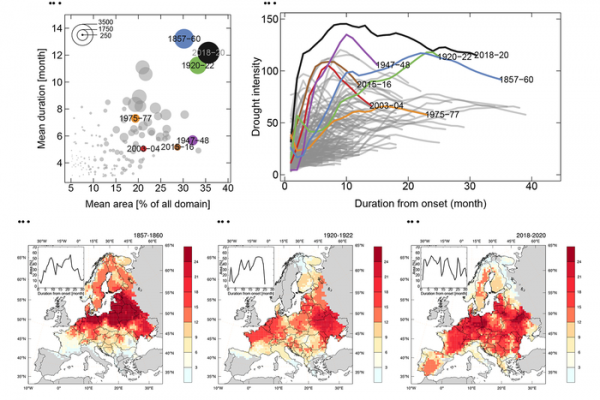These were days, months and years that many will come to remember: the drought from 2018 to 2020. An international team of researchers led by scientists from the Helmholtz Centre for Environmental Research (UFZ) has succeeded in categorizing the historical dimensions of this event. Based on their findings, no drought covering such a large area for an extended period and coinciding with warmer temperature has occurred in Europe since the middle of the 18th century. The years from 2018 to 2020 thus represent a new benchmark for droughts. Because such an unprecedented event is likely to occur more frequently in the future, the scientists urgently recommend the development and implementation of suitable, regionally adapted drought prevention measures.
Withered meadows and fields, dry stream beds, dead forests, and reduced power plant outputs - the drought years of 2018, 2019 and 2020 were exceptional and had substantial impacts on nature and the economy. Previously it was not clear where they should be classified in their historical dimension. Now we know: "The 2018 to 2020 drought sets a new benchmark for droughts in Europe", says Dr. Oldrich Rakovec, UFZ modeller and lead author of the article published in the Earth’s Future journal of the American Geophysical Union. The scientists documented this with a large compilation of data and modelling techniques which allowed them to reconstruct historical droughts back to 1766 and comparing their extents with the drought of 2018 to 2020.
The drought from 2018 to 2020 thus affected approximately one third of the land area of Europe, especially in central Europe, such as Germany, France and the Czech Republic. "No other drought event over the last 250 years had such a large spatial extent as this one", explains Oldrich Rakovec. The total duration of the drought event in Europe was also unusually long, starting in April 2018 and not ending until December 2020: 33 months. Only the drought between 1857 and 1860 lasted slightly longer for a total of 35 months. What’s more: The drought from 2018 to 2020 also continued in 2021 and 2022 in deeper soils (i.e., up to 2m below the ground surface). "Although 2021 was wetter and supplied much needed water in the upper soil important for sustaining agriculture activities, the moisture did not penetrate to greater depths", says the UFZ modeller.
Read more at: Helmholtz Centre for Environmental Research
(a) Mean area and duration of European droughts over the period from 1766 to 2020 based on model simulations. Bubble size corresponds to total drought intensity. (b) Temporal evolution of drought intensity. The 2018–2020 event exhibits the largest drought intensity in comparison to all other events over the entire time. (c–e) Spatial maps depicting the distribution of mean drought duration in months during three major drought events. The inset plots in the maps show areal coverage over the course of the respective drought period. (Photo Credit: UFZ)


